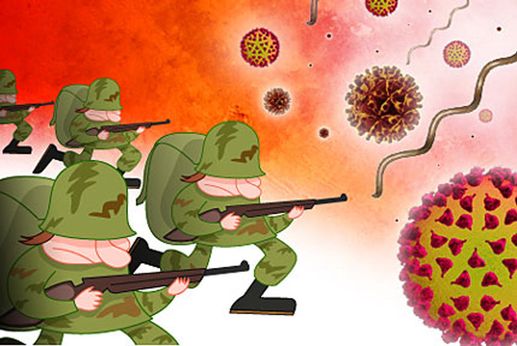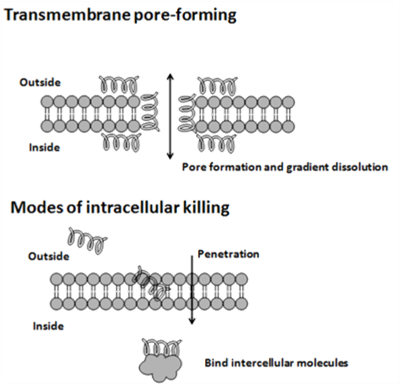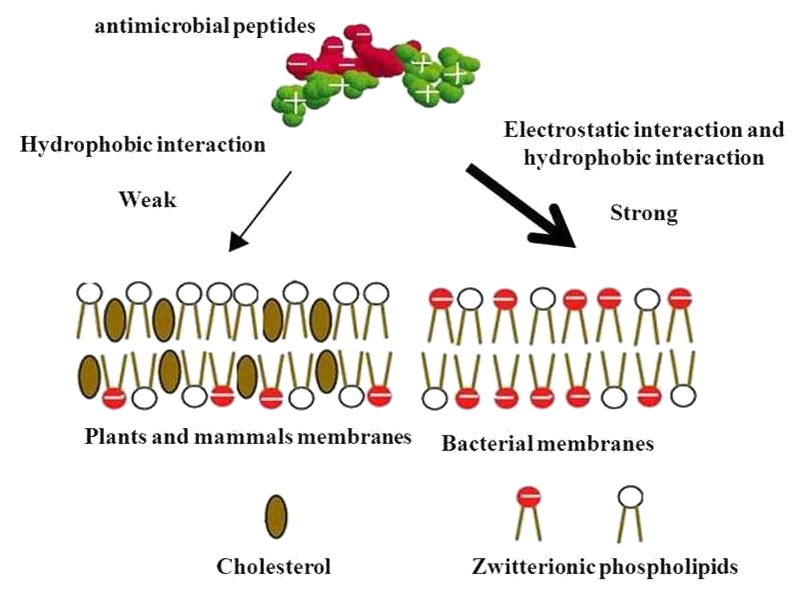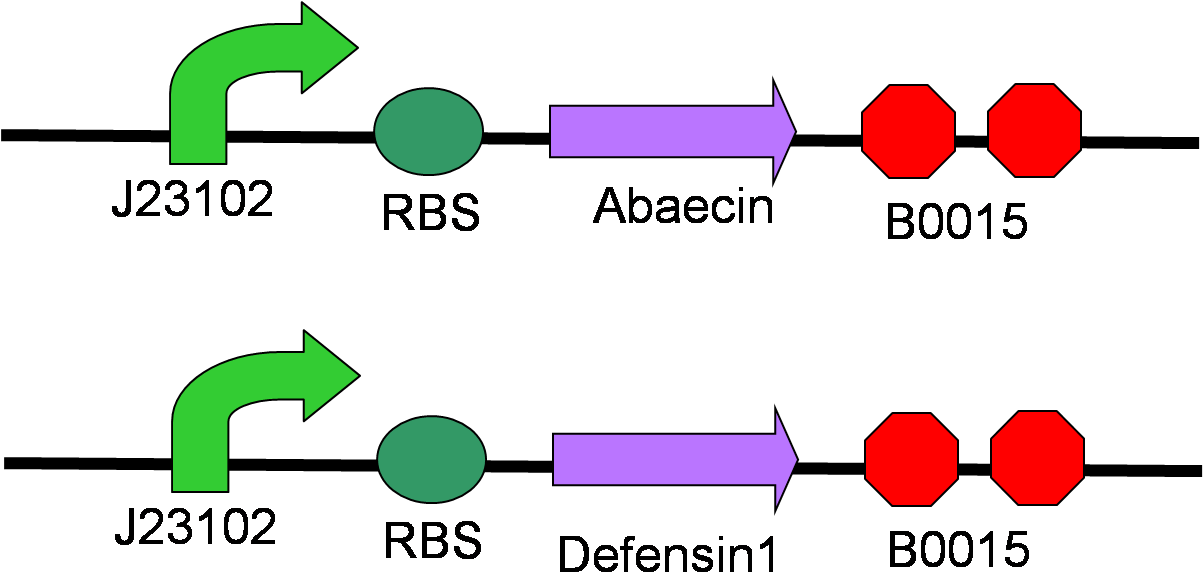Team:NYMU-Taipei/Project/Inhibition/Killing
From 2013.igem.org


Contents |
Introduction
Our main goal is to kill Nosema ceranae without harming the bees.
First, we came up with several chemicals that might achieve our goal. They are antimicrobial peptides, such as Apidaecin, Abaecin, Hymenoptaecin, Defensin1, which are all antimicrobial peptides in bees. Because these chemicals are secreted by bees themselves, they definitely do no harm to bees. Among four kinds of antimicrobial peptides, Abaecin and Defensin are much smaller so it would be easier to synthesize, which was the first reason why we chose Abaecin and Defensin1 to treat bees. The second reason was that the sequence of Apidaecin can’t be found now. The third reason is that Abaecin and Defensin1 have been relatively well-studied. In addition to antimicrobial peptides, we figured out other chemicals, which are Chitinase, Herein, Protofil, Cytochrome P450. Unfortunately, Chitinase, Herein, Protofil, and Cytochrome P450 have several defects, for example, they are all macromolecules, which make them difficult to be synthesized by E. coli. Moreover, even though E. coli successfully synthesize them, it is too hard to make these chemicals released. According to all of the above, we finally decided to use Defensin1 and Abaecin to treat the bees infected by Nosema ceranae.
Background
How Do AntiMicrobial Peptides Work?
The cytoplasmic membrane is a frequent target, but peptides may also interfere with DNA and protein synthesis, protein folding, and cell wall synthesis. The initial contact between the peptide and the target organism is electrostatic, as most bacterial surfaces are anionic, or hydrophobic. Their amino acid composition, amphipathicity, cationic charge and size allow them to attach to and insert into membrane bilayers to form pores by ‘barrel-stave’, ‘carpet’ or ‘toroidal-pore’ mechanisms. Alternately, they may penetrate into the cell to bind intracellular molecules which are crucial to cell living. Intracellular binding models includes inhibition of cell wall synthesis, alteration of the cytoplasmic membrane, activation of autolysin, inhibition of DNA, RNA, and protein synthesis, and inhibition of certain enzymes. One emerging technique for the study of such mechanisms is dual polarisation interferometry. In contrast to many conventional antibiotics these peptides appear to be bactericidal instead of bacteriostatic.
- See more("articles & pictures" modified from) http://en.wikipedia.org/wiki/Antimicrobial_peptides
After deciding the chemicals that are able to kill Nosema ceranae without harming the bees and how they work, we designed our experiment. The following is our material list as well as experimental procedure.
Circuit Design & Experimental Methods
Circuit Design
Experimental Methods
- Testing the AMPs influence on Bee. coli
1. Make experiment group and control group with our Bee. coli >> Exp:transformed the Defensin1 gene circuit; Control: w/o the gene
2. Determine both groups' OD 600 for three to five days
3. Collect and Analyze the data and make growth-rate graphs to check whether Defensin1 would kill or inhibit
Bee. coli
4. Change the gene circuit into the Abaecin one and do step 1~3 in parallel with the Defensin1 experiments
- Check our products' efficiency against Nosema
1. Make experiment group and control group with our Bee. coli >> Exp:transformed the Defensin1 gene circuit; Control: w/o the gene
2. Both add 5x10³ spores in the liquid for infecting experiment and control groups, respectively.)
5. Measure the amount of spores in control group daily and plot the replication number of spores against time after inoculation (Day 1~7).
6. Five to seven days after inoculation of the spores is the minimum duration for germination and reproduction of Norsema ceranae.
8. Count the numbers of spores in experiment group and control group by RBC counting chamber.
 "
"













